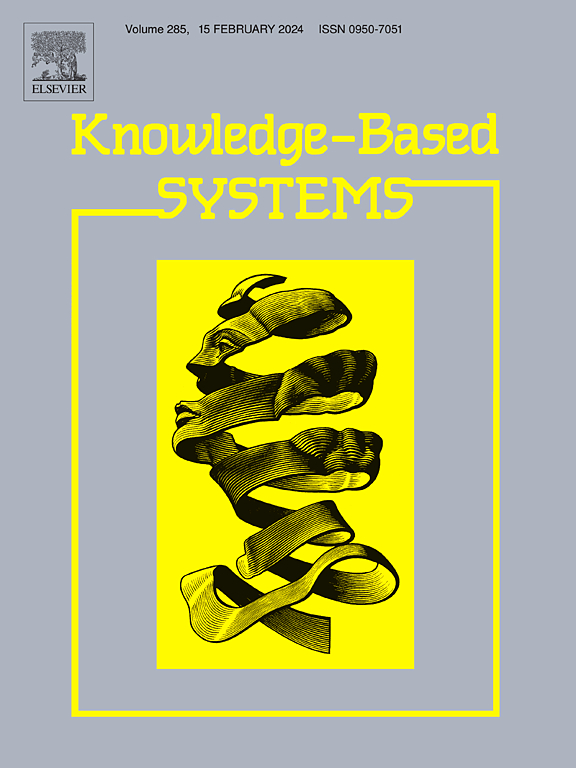一种统一的多源假新闻检测跨源上下文增强模型
IF 7.6
1区 计算机科学
Q1 COMPUTER SCIENCE, ARTIFICIAL INTELLIGENCE
引用次数: 0
摘要
数字平台上越来越普遍的错误信息对公共信息完整性构成严重威胁。虽然现有的假新闻检测方法主要集中在单源数据上,但这种方法往往无法解决来自不同平台的多源信息所带来的复杂性。在这种多来源的背景下,检测假新闻仍然是一个相对未被充分探索的挑战。传统的跨域方法通常使用单源建模策略转移域不变特征,但它们忽略了跨源可用的丰富上下文线索-这是提高检测精度的关键方面。为了克服这些限制,我们提出了一个统一的框架,通过联合利用源内和源间的交互,有效地捕获全局上下文信息。我们的模型集成了两个主要组件:(1)一个跨源全局上下文学习模块,采用上下文增强转换器来建模多源实例之间的远程依赖关系;(2)一个双级对比学习机制,在局部和全局级别对齐表示,减少特征空间和源域之间的不一致性。在公开可用的多源数据集上进行的大量实验表明,我们的方法比现有的最先进的方法取得了实质性的改进。具体来说,与LIMFA等领先模型相比,它的分类准确率提高了约5%,突出了我们的框架在推进多源假新闻检测方面的鲁棒性和有效性。本文章由计算机程序翻译,如有差异,请以英文原文为准。
A unified cross-source context enhancement model for multi-source fake news detection
The growing prevalence of misinformation across digital platforms poses a serious threat to public information integrity. While existing fake news detection methods have predominantly focused on single-source data, such approaches often fail to address the complexities introduced by multi-source information originating from diverse platforms. Detecting fake news in this multi-source context remains a relatively underexplored challenge. Traditional cross-domain methods typically transfer domain-invariant features using single-source modeling strategies, yet they neglect the rich contextual cues available across sources—an aspect critical for enhancing detection accuracy. To overcome these limitations, we propose a unified framework that effectively captures global contextual information by jointly leveraging intra-source and inter-source interactions. Our model integrates two principal components: (1) a cross-source global context learning module employing a context-augmented transformer to model long-range dependencies among multi-source instances, and (2) a dual-level contrastive learning mechanism that aligns representations at both local and global levels, reducing inconsistencies across feature spaces and source domains. Extensive experiments conducted on publicly available multi-source datasets demonstrate that our method achieves substantial improvements over existing state-of-the-art approaches. Specifically, it yields an approximate 5% gain in classification accuracy compared to leading models such as LIMFA, highlighting the robustness and effectiveness of our framework in advancing multi-source fake news detection.
求助全文
通过发布文献求助,成功后即可免费获取论文全文。
去求助
来源期刊

Knowledge-Based Systems
工程技术-计算机:人工智能
CiteScore
14.80
自引率
12.50%
发文量
1245
审稿时长
7.8 months
期刊介绍:
Knowledge-Based Systems, an international and interdisciplinary journal in artificial intelligence, publishes original, innovative, and creative research results in the field. It focuses on knowledge-based and other artificial intelligence techniques-based systems. The journal aims to support human prediction and decision-making through data science and computation techniques, provide a balanced coverage of theory and practical study, and encourage the development and implementation of knowledge-based intelligence models, methods, systems, and software tools. Applications in business, government, education, engineering, and healthcare are emphasized.
 求助内容:
求助内容: 应助结果提醒方式:
应助结果提醒方式:


